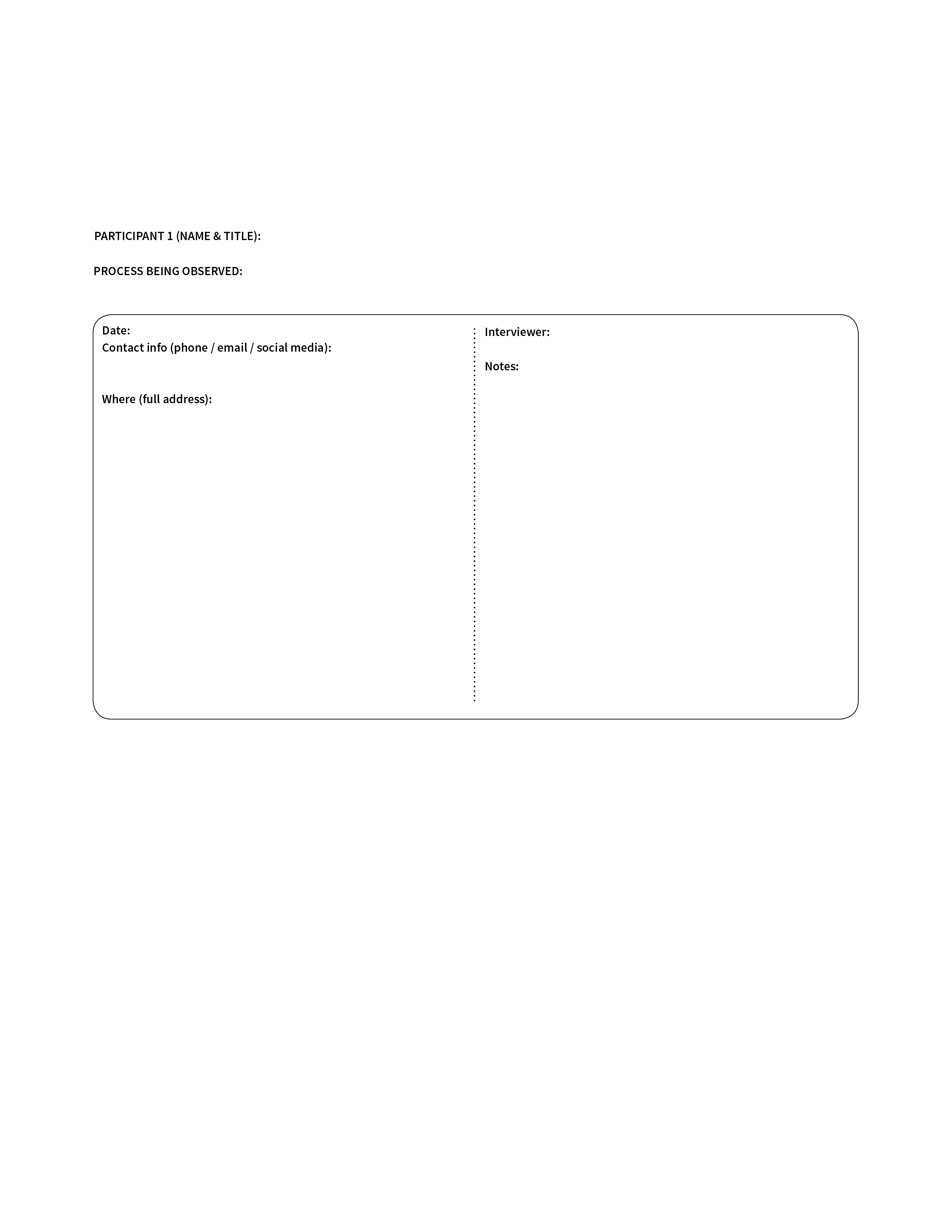Discovery Operations Guide
Two Methods
Fly on the Wall Observation Tips
-
Introduce yourself at the beginning of the observation. If you need to, use your elevator pitch to briefly explain to everyone present what your project is and how you think observing them will help your work. Providing background de-mystifies your work and allows people to feel at ease.
-
Place yourself somewhere in the room where you have as wide a sight line as possible without being in the direct sightline of any of the participants.
-
Throughout the observation, unobtrusely take notes and photos, if photos are allowed. Remember to turn off the sound on your camera so you don’t have a distrcting shutter noise when you take photos.
-
Note where you have questions about the process, but save them until after you are done with the observation. Your goal is to understand the entire flow of the system; interruping the participant with questions will create a flow that does not represent the true participant experience.
-
If the participant continuously engages you as they move through the system, be prepared to pivot into a more active role, even into one or participatory observation.
Participatory Observation Tips
-
Introduce yourself at the beginning of the observation. If you need to, use your elevator pitch to briefly explain to everyone present what your project is and how you think observing them will help your work. Providing background de-mystifies your work and allows people to feel at ease.
-
Place yourself whereever the participant directs you and follow their lead.
-
As you participate, be aware of what your level of embarassment or anxiety might be due to the fact that you’re doing something new, and what might be due to the fact that the system in which you’re particpating creates discomfort for participants.
-
Feel free to ask questions if you’re confused about the process. Note these points if you can, as they indicate points at which either the participant has simply gotten used to a bad system or points at which new users of the system might encounter difficulties.
Framework: Track Observation Details
Use this framework as a model for the detailed record of each observation.
Observation notes can include photos, diagrams, and expressive language that describes the sensorial aspects of the system. Record your notes in whatever medium is most convenient, but keep it all together neatly. Being able to reference your notes easily will be crucial during the upcoming Synthesis phase.
